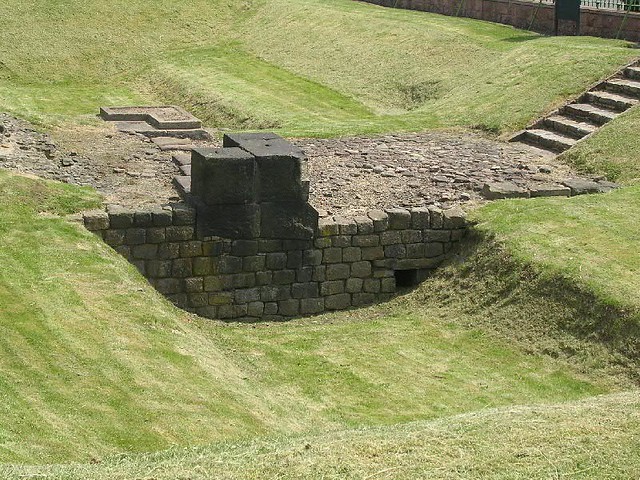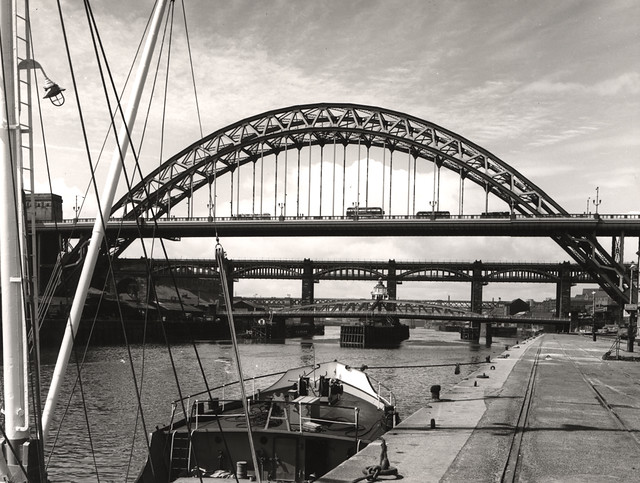Topics > Tyne and Wear > Newcastle upon Tyne > Benwell > Benwell, Historical Account, 1890
Benwell, Historical Account, 1890
Extract from: Kelly's Directory of Durham, 1890
BENWELL is a township, village and a parish, formed January 17th, 1843, from that of St. John, Newcastle, and is on the north bank of the Tyne, 2 ½ miles south-west from Newcastle-upon-Tyne, in the Tyneside division of the county, west division of Castle ward, Newcastle-upon-Tyne petty sessional division, union and county court district, Newcastle-upon-Tyne rural deanery, archdeaconry of Northumberland and diocese of Newcastle. A Local Board of Health of nine members was established here 1 June, 1878; this board also includes part of Fenham in its district. The church of St. James is a building of stone in the Perpendicular style, consisting of chancel, nave and a western tower containing one bell: there are several memorial stained windows and some good sculpture at the east end of the chancel, presented by Ralph Brown esq. of Benwell Grange: the church affords 800 sittings. The register dates from the year 1832. The living is a vicarage, net yearly value £350, with residence, in the gift of the Bishop of Newcastle, and held since 1877 by the Rev. Francis Bromley M.A. of Worcester College, Oxford, and hon. canon of Newcastle, Divine service is conducted in the Board school on Sundays. There are Wesleyan Methodist chapels at New and South Benwell.
The Royal Victoria Asylum, for the industrious blind of the counties of Northumberland, Durham, Cumberland and Westmorland and the town of Berwick-upon-Tweed, is at Benwell Dene, and is a voluntary charity, instituted in 1838, in commemoration of the coronation of Her Majesty the Queen.
This place was the site of the Roman station Condercum, and in Oct. 1862, in Benwell Little Park, outside the eastern rampart of the station, remains were discovered of a building with a round apse, in which lay three human skeletons side by side, together with a fibula, the bronze handle of a chest and coins of Nero, Trajan, Antoninus Pius, Faustina, Severus, Valerianus and the usurper Laelianus: two altars were also found, one of which, 4 feet 4in. high and 16in. wide, was highly ornamented and bore the inscription:-“DEO ANTENOCITICO ET NVMINIB AVGVSTOR AEL. VIBIVS X LEG XX V. V. V. S. L. M.;” the other and much-plainer altar had a longer inscription with a similar dedication. Benwell Park is the seat of Mrs. Mulcaster y Benwell Hall, of John Liddell esq. and Benwell Cottage, of Mrs. Scott, and there are many other good residences. Benwell Tower, the residence of the Rt. Rev. Ernest Roland Wilberforce D.D. Bishop of Newcastle, is a fine mansion of Stone, purchased from John Sowerby esq. by J. W. Pease esq. banker J.P., D.C.L. of Pendower, and presented by him to the diocese as the residence of the bishop. In this parish is a very fine well, noted for the purity of its water; it is supplied from a constantly flowing spring in the grounds of Benwell lower, and is used by the inhabitants for domestic purposes. There are two extensive collieries here. The reservoir and works of the Newcastle and Gateshead Water Company are also here. Sir Hugh Edward Adair bart. D.L., J.P. of Flixton Hall, Bungay, Suffolk, is lord of the manor. The principal landowners are Major Blackett-Ord J.P. of Whitfield Hall, Langley-on-Tyne R.S.O. Thomas E. Crawhall esq. the representatives of the late Buddie Atkinson esq. the representatives of the late Henry Milvain esq. J.P. of North Elswick Hall and John Oliver Scott esq. The soil is strong loam; subsoil, clay. The chief crops are wheat, barley, oats, potatoes, turnips, and some land in pasture. The area of the township is 1,296 acres; rateable value, £34,265; the population of the parish of St. James, Benwell, in 1891 was 27,039, of which 10,354 are in Benwell township; the population of the local board district is 10,517, of which 163 are in Fenham.
Schools
- A School Board of 9 members was formed June 3, 1889; Francis Purvis, clerk to the board, 7 Clara street.
- New Board (mixed), built in 1893, for 1,272 children; average attendance, 820 mixed & 320 infants.
- Benwell Delaval Board, erected in 1893, for 632 children (mixed); average attendance, 300 mixed & 121 infants.
- Church (mixed), Denton road, erected in 1872, for 260 boys & 78 infants; average attendance, 209 boys & 70 infants.
- Benwell Village (girls), for 60 children; average attendance, 63.

Co-Curate Page
Benwell Vallum Crossing / Condercum
- Overview About Condercum Map Street View "Nothing is now visible of the fort at Benwell (Condercum) in Newcastle, which was occupied throughout most of the Roman period by the Asturian …

Co-Curate Page
Royal Victoria School for the Blind (1838 - 1985)
- Overview Map Street View The Royal Victoria Asylum for the blind was established from a fund to mark the coronation of Queen Victoria in 1837 and was originally located at …

Co-Curate Page
Church of St. James, Benwell
- Overview Map Street View St James’ Church in Benwell first opened as a Chapel of Ease in 1833. The church was extended in 1864 by addition of chancel and south aisle, designed …


Co-Curate Page
Benwell Vallum Crossing / Condercum
- Overview About Condercum Map Street View "Nothing is now visible of the fort at Benwell (Condercum) in Newcastle, which was occupied throughout most of the Roman period by the Asturian …

Co-Curate Page
Royal Victoria School for the Blind (1838 - 1985)
- Overview Map Street View The Royal Victoria Asylum for the blind was established from a fund to mark the coronation of Queen Victoria in 1837 and was originally located at …










